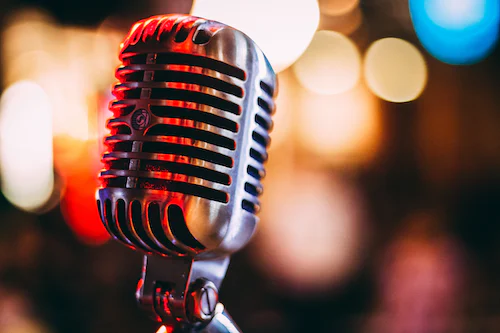Table of Contents
ToggleIntroduction:
Music, which resonates with the very core of the human experience, transcends borders and cultures and is frequently referred to as the universal language. Its capacity to inspire feelings, recount stories, and associate individuals across reality is unrivaled. In this investigation of the ageless power and variety of music, we will dig into the complex parts of this work of art, from its authentic roots to its contemporary articulations, looking at the significant effect it has on people and social orders around the world.
The Historical Tapestry of Music:
Harmonies of the Soul” and “The Authentic Embroidered artwork of Music” come together to tell a wealthy story around how music has changed and proceeded to be critical all through time. These works explore the significant affect that music has on human feelings, otherworldly existence, and society, extending from the antiquated predecessors of melodic conventions to modern appearances of social differing qualities. Peruses are welcomed to travel through the complex strings of melodic legacy, finding the interconnecting of melodic styles, developments, and impacts through striking narrating and insightful understanding. These investigations make an embroidered artwork that celebrates the breadth and profundity of human inventiveness by lighting up the immortal control and widespread dialect of music.
A. Ancient Origins:
The underlying foundations of music broaden profound into mankind’s set of experiences, with proof of instruments going back millennia. Music has been an important part of rituals and cultural expression since ancient times, from Mesopotamia and Egypt to Greece and India’s classical traditions.

B. Medieval and Renaissance:
The middle age and Renaissance periods saw the improvement of melodic documentation, empowering the protection and dispersal of melodic structures. Gregorian serenades, singer numbers, and elegant music improved the woven artwork of European melodic customs during this time.

C. Baroque to Romantic
Opera and elaborate ornamentation were both introduced during the Baroque era, while clarity and structure were emphasized during the Classical era. The Heartfelt period, set apart by close to home articulation and independence, led to show-stoppers by arrangers like Beethoven, Mozart, and Chopin.
D. 20th Century and then some:
From jazz and blues to shake, pop, and electronic music, a plenty of melodic styles arose in the twentieth hundred years. The impact of innovation, with the approach of recording and later computerized creation, altered the creation and circulation of music, prompting uncommon variety and openness.
The Expressive Palette of Musical Genres:
The energetic examination of the shifted and ever-changing field of melodic expression found in “The Expressive Palette of Melodic Classes” is captivating. This book respects the wide run of classes that improve our aural involvement, from electronic rhythms to jazz act of spontaneities, from shake songs of devotion to classical orchestras. Peruses are taken on a trip through the improvement, movement, and social pertinence of numerous melodic shapes through discerning examination and captivating narrating. The expressive palette spreads out with each page turn, displaying the particular tones, surfaces, and sentiments that characterize each sort. This book empowers peruses to appreciate the wealthy embroidered artwork of melodic assortment and investigate the boundless conceivable outcomes of sound development, whether diving into the roots of hip-hop or the blues.
A. Classical Music:
Traditional music, with its rich instrumental creations and immortal orchestras, keeps on enamoring crowds around the world. The immortal magnificence and intricacy of the old style custom are exemplified by crafted by authors like Bach, Mozart, and Tchaikovsky.

B. Jazz and Blues:
Established in African-American practices, jazz and blues significantly affect the worldwide music scene. Impromptu creation, special timing, and close to home profundity portray these kinds, affecting all that from rock to hip-bounce.

C. Rock and Roll:
The coming of wild during the twentieth century denoted a social insurgency. With its vigorous beats and defiant soul, exciting music has brought forth endless sub-classes and stays a main thrust in mainstream society.
D. Pop and Electronic Music:
Popular music, portrayed by infectious songs and open verses, rules the graphs and radio wireless transmissions. Techno, house, and dubstep are only a couple of the numerous subgenres of electronic music that have arisen because of the converging of innovation and innovativeness. World Music:
World music draws inspiration from the varied cultural traditions of its many different forms. From the cadenced thumps of African drumming to the multifaceted songs of Indian traditional music, world music praises the worldwide mosaic of melodic articulation.

The Close to home Scene of Music:
The Close-to-Home Scene of Music” offers a close-up see at the territorial music scenes that prosper in towns all over the world. This book highlights the exuberant and often-overlooked music scenes, from underground settings to nearby coffee shops, which offer assistance to characterize the social personality of cities and towns. Through first-hand accounts, in-depth interviews with artists and organizers, and point by point accounts of exhibitions, peruses are empowered to submerge themselves in the imperativeness, differing qualities, and creativity of these grassroots music bunches. This book highlights the DIY attitude of indie shake scenes and worldwide music get-togethers, celebrating the capacity of music to advance association, expression, and having a place on a nearby level.
A: Resonance Emotional:
Music has an extraordinary capacity to bring out a great many feelings. Whether it’s the cheerful festival of a significant key or the reflective state of mind of a minor key, the close to home reverberation of music gives a significant and all-inclusive association among audience members.

B. Therapeutic Power:
Music treatment has arisen as a perceived and powerful type of recuperating. Its helpful power reaches out to reducing pressure, further developing state of mind, and supporting different clinical medicines, making it a fundamental piece of comprehensive medical services rehearses.
The Effect of Innovation on Music:
The basic influence that headway has had on the enhancement of music is the subject of this section. It looks at how melodic classes, styles, and designs have been shaped by advancement, instruments, composition techniques, and imaginative experimentation over time. Headway has diligently pushed the boundaries of what is conceivable in the era, execution, and movement of music, from the advancement of the phonograph to the improvement of progressed sound era. This region looks at how advancement has revolutionized soundscapes, fueled creativity, and changed the way we experience and bolt in with music through quick examination and compelling outlines. This range lights up the enthusiastic relationship between headway and melodic expression, whether investigating the ground-breaking progressions of individual masters or the broader social shifts brought nearly by imaginative progress.
A. Recording and Production:
The approach of recording innovation changed the music business, permitting specialists to catch their exhibitions and contact more extensive crowds. Artists can now experiment with sounds, create intricate arrangements, and push the creative envelope with the development of production tools.

B. Digital Distribution and Streaming
The ascent of the web and computerized stages changed the circulation of music. Internet real time features have changed how we consume music as well as reshaped the financial scene for performers and the business all in all.

C. Home Production and DIY Culture:
Computerized sound workstations and home recording studios have made music creation open to all, permitting hopeful performers to deliver accounts of expert quality without spending a fortune on studio space. The Do-It-Yourself (DIY) culture has flourished, fostering a unique and open music scene.
Music as a Cultural Catalyst:
The point of “Music as a Social Catalyst” is the critical affect that music has on social character, social developments, and collective awareness. Music has been a effective constrain for social alter and social advancement all through history, from people tunes that protect verbal conventions to dissent tunes that motivate political activism. This examination centers on how music capacities as a all inclusive dialect that rises above borders, bridging social separates, empowering discourse, and celebrating differences. Peruses learn how music impacts societal values, shapes social accounts, and cultivates associations between people and communities through case considers, verifiable accounts, and modern cases. Whether looking at the effect of music on character improvement, social bequest security, or the progression of gracious rights, this examination commends the groundbreaking drive of music as a social impulse.
A. Activist Movements and Movements:
Since the beginning of time, music plays had a critical impact in social movements and activism. From fight melodies during the Social liberties Development to songs of devotion of opposition in the midst of political turmoil, music has filled in as an integral asset for communicating question and moving change.

B. Cultural Identity:
Music is profoundly entwined with social character, mirroring the qualities, customs, and stories of assorted networks. Whether through conventional people tunes or contemporary articulations, music safeguards and celebrates social legacy.
Conclusion:
In the complicated embroidery of human life, music arises as a string that winds around together feelings, societies, and narratives. The universal nature of the human experience is exemplified by its timeless ability to communicate the ineffable and transcend boundaries. Music is still an ever-evolving, ever-inspiring force that harmonizes the soul and enriches the journey of life, from the ancient echoes of drumbeats to the digital symphonies of today. As we keep on investigating the different scenes of melodic articulation, we wind up attracted to the songs and rhythms that reverberate with the embodiment of being human.
FAQS:
The differing world of melodic sorts is the subject of this book, which digs into the history, characteristics, and social noteworthiness of different melodic styles.
This book is composed for individuals who like music, whether they’re modern to it or as of now a performer. It will offer to music darlings, understudies, instructors, and anybody else who needs to learn more approximately the complicated web of melodic expression.
The Expressive Palette of Melodic Sorts” covers a wide run of melodic classes, counting world music, electronic music, classical music, jazz, blues, shake, pop, hip-hop, and electronica. It looks at darken melodic developments as well as well-known classes.
The authentic setting, melodic characteristics, key specialists, and social impacts of each class will be superior caught on by peruses. They will too discover out how different melodic subgenres have created over time and contributed to the generally melodic scene.
The book is implied to be perused by a wide run of individuals, making it valuable for both recreation perusing and scholastic investigate. It gives a perusing involvement that is both instructive and pleasant by combining locks in narrating with thorough inquire about.







